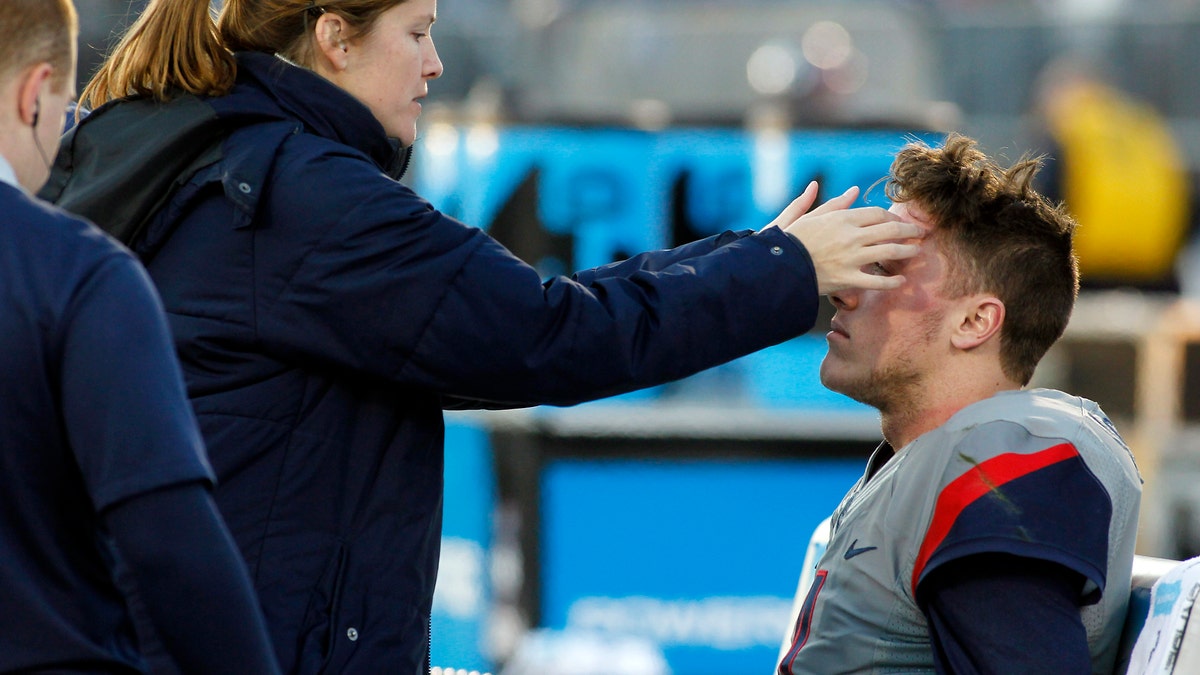
Nov. 21, 2015: In this file photo, medical staff check on Connecticut quarterback Bryant Shirreffs, right, during the first quarter of an NCAA college football game against Houston, in East Hartford, Conn. (AP)
Researchers who created an animal model to observe how the brain recovers from repeated head trauma concluded that doctors who order several days rest after a concussion are following proper protocol.
Georgetown University Medical Center (GUMC) neuroscientists created the first-of-its-kind study to observe the brain’s response to a single concussion, an injury received daily for 30 days and an injury received weekly over a span of 30 weeks.
“It’s been very hard to study acute changes in that occur in brain,” Dr. Mark Burns, lead researcher and assistant professor of neuroscience at GUMC, told FoxNews.com. “Most of the animal models have severe trauma.”
In this study, researchers were able to control the amount and the severity of the trauma the animal received. They found that the mice who received repeated mild concussions with only a day to recover between the injuries were left with damage and brain inflammation that remained evident a year after the injury.
However, in the mice with a single concussion, researchers found the brain temporarily lost 10-15 percent of the neuronal connections in their brains, but no inflammation or cell death resulted. With three days’ rest, all neuronal connections were restored. The neuronal response was also seen when one week of rest was given between each injury.
“It’s good news that the brain can recover from a hit if given enough time to rest and recover,” Burns said. “But on the flip side, we find that the brain does not undertake this rebalancing when impacts come too close together.”
Burns said the study was designed so that researchers could detect the mildest concussions, as opposed to severe trauma where symptoms are more obvious. For instance, a player who sustains repeated hits to the head during daily practice, as opposed to a more obviously severe hit during a game.
“Concussion itself doesn’t have to have a loss of consciousness, but it’s obviously easy to detect one if you’re unconscious on the ground,” he said. “This was as low as we could go in this model, and the idea was to have these head traumas and see what the initial response was and compare it to repetitive injury.”
“The findings mirror what has been observed about such damage in humans years after a brain injury, especially among athletes,” Burns said. “Studies have shown that almost all people with single concussions spontaneously recover, but athletes who play contact sports are much more susceptible to lasting brain damage. These findings fill in the picture of how and when concussion and mild head trauma can lead to sustained brain damage.”
The study was published in the March 2016 issue of American Journal of Pathology.




















